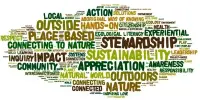Soil ecology is a field of ecology that studies the interactions of soil organisms, the physical and chemical features of soil, and how these elements interact with one another. It is the study of soil organism interactions as well as biotic and abiotic components of the soil environment. It includes species ranging from microscopic bacteria and fungus to bigger organisms such as insects and earthworms.
Soil is a complex and dynamic ecosystem that is critical to the survival of terrestrial life. It is particularly concerned with nutrient cycling, pore structure creation and stabilization, pathogen spread and vigor, and the biodiversity of this diverse biological population.
Overview
Soil is made up of numerous physical, chemical, and biological elements that interact with one another. Soil is a complex mixture of fractured and weathered minerals as well as decaying organic stuff. It provides some nourishment for plants as well as mechanical support when combined with adequate levels of air and water.
Soil ecology plays a role in a number of biogeochemical cycles, including the carbon, nitrogen, and phosphorus cycles. Microorganisms play an important role in the transformation and cycling of these elements in the soil. Soil life has more diversity and abundance than any other ecosystem. Understanding the ecology below-ground, which governs plant establishment, competitiveness, and growth, is a fundamental component of plant sciences and terrestrial ecology.
Key components of soil ecology include:
- Microorganisms: Soil bacteria, fungus, and other microorganisms are abundant and perform critical roles in nutrient cycling, organic waste breakdown, and disease suppression. They help to maintain soil structure and fertility.
- Fauna: Invertebrates such as nematodes, mites, insects, and earthworms live in soil. These creatures aid in nitrogen cycling and contribute to soil structure by digging and mixing organic materials.
- Plants: Plant roots interact with soil organisms, developing symbiotic partnerships with mycorrhizal fungi and impacting microbial populations in the rhizosphere (the zone of soil impacted by plant roots).
- Nutrient Cycling: Soil organisms are integral to the cycling of nutrients in ecosystems. Decomposers break down organic matter, releasing nutrients that are then taken up by plants. This cycling is crucial for maintaining soil fertility.
- Soil Structure: The actions of soil organisms influence the physical features of soil, including its structure, texture, and composition. Burrowing actions of earthworms, for example, contribute to soil aeration and structure.
Soil ecology is critical for sustainable land management, agriculture, and conservation. Human activities such as deforestation, agriculture, and urbanization can have an impact on soil ecosystems, resulting in concerns such as soil erosion, fertility loss, and biodiversity changes. Conservation and sustainable practices are aimed at preserving and improving soil health for the benefit of both ecosystems and human societies.
















